
Background
CK: First of all, a little bit of background about you. I know you are from South Africa, I know from all the stories on your website that you were going to be a game warden. Is that really true?
MZ: Yes. I went to college and wanted to be a game warden.
CK: And is it really true that you didn’t do it because you flunked a botany course?
MZ: Indeed.
CK: Really. How could you flunk a botany course?
MZ: Two ways. One, this was South Africa in the early 80s, height of apartheid. I went to a university that was quite liberal. And there were demonstrations at lunch, and botany was the period before lunch. I was involved in a lot of protests, and as a result I missed a lot of classes.
CK: So, your politics got in the way..
MZ: So my politics got in the way of botany. And then also, the professor was pretty boring. That didn’t help.
CK: Now some people would see a move from life sciences, because when you are talking about big organism life science to chemistry, some people would see that as odd. I don’t, but I understand why some people would. How did that happen?
MZ: I did well in chemistry. And in South Africa, it’s the English system, so you come in with a major, and you have to take a set of courses for that major. Every chemist would take chemistry, biology, physics, and math. You had no option. As someone who wanted to do conservation, I took biology, chemistry for biologists, math, and physics. I already had the core chemistry courses. So it wasn’t that difficult to switch. The only thing was that the chemistry I took was a half a chemistry, not a whole chemistry course, because it was for biologists. I had to catch up a bit on the chemistry. But I did well in it, and thought it was pretty interesting.
CK: So, your university education wasn’t a liberal arts education.
MZ: Not at all. In my whole career, I’ve taken one course on international politics. Six months of classes not related to chemistry. Nothing else.
CK: From my perspective, as somebody who has been immersed in the liberal arts since from the time I was little, I sort of automatically understood the value of the liberal arts as being something that allows people to learn to analyze and ask questions in different disciplines. How has it been for you to now be immersed in a liberal arts organization, since I know you are very involved with the new curriculum here at Connecticut College. How did it feel?
MZ: Yes, so, I came to America. I went to an engineering school and then, Ivy League. I really had no experience about liberal arts. I applied to this position at Conn College, and then I looked up on the website and saw what it was about, and to be frank, I think the only reason they interviewed me was because I was an hour away. And the only reason I came here was because it was an hour away. And so I came to the interview, and learned all about it in my interview. But I really enjoyed it. In my past, I had taught for a year in a high school, and I like teaching and I like interacting with students. It’s always been a passion of mine. I realized I liked the idea of something that wasn’t totally research driven, where students were important as well. I can speak three languages, so language was important to me. Even though I’d never seen a liberal arts college, I was intrigued and liked the idea. And it’s worked out perfectly.
CK: Now for some people, and it’s true in any discipline but sometimes it is particularly true in the sciences, there’s teaching, and then there’s research. Most academics do both but there’s usually a passion that falls one side of that fence or the other even though they may really enjoy and like the other activity. My sense about you has always been that it’s much more equal. Is that correct, or not?
MZ: I think I go through phases. There are phases when I’m more enamored by the research and pulled in, depending on how well it’s going, depending on what I’m doing. But after a while, then I want to do something else. At the moment, the last three years I’ve written three books, and that’s been taking me away from my research a little bit. And Science Leaders has also been taking time away. Since I’ve taken over Science Leaders, there’s been a definite drop in my productivity research-wise. For a talk I drew a graph once, that showed my number of publications, and when Science Leaders start, you can actually just see it drop. So, yeah, you can’t do everything.
CK: Right. But in general, you successfully moving back and forth.
MZ: Yes.
CK: When you were an undergraduate, when was there a point that you felt the research bug, that it really grabbed you.
MZ: As a child, I grew up in a small mining industrial town, and we were close to the border of town. I would go into the veldt and the fields, and we’d trap animals, so there was that interest. But that was always more of a biological zoological interest. In chemistry, I worked in a lab, but it never really grabbed me much. The only reason I did a PhD was to avoid the South African army, which was designed to defend apartheid. I felt that the only option I had was to leave the country, and the only way I could leave the country was to go to graduate school. And that’s the only reason I continued studying. I would never have gone to graduate school otherwise.
CK: Funny, how life kind of leads you in directions and then something happens. When did you know suddenly that it was the right thing?
MZ: At graduate school, my advisor was very hands-off, he’d say “This is what I want you to do. Find yourself a project.” And I really enjoyed that I had a lot of freedom, and TAing students as well, I enjoyed that. I saw he travelled a lot, which really appealed to me.
CK: It appealed to you because you thought travel could be part of what you did, not that he was gone?
MZ: That I wanted to lead that life, yes. Before that, I saw doing chemistry as a route to a job, while being a game warden was going to be a passion. I still have friends that went that way, who are game wardens.
CK: Do you regret that?
MZ: Their children have grown up in boarding schools, and have been away from a very young age, and, well, It’s a young person’s job. At this point, they either become administrators or they lead a tough life. So things worked out for me. I’m quite happy…
CK: Raising your kids and doing your job?
MZ: Yeah.
Teaching and Research
CK: A Nobel laureate in chemistry once said to me, undergraduates cannot do real research because they don’t know enough. Where are you on a scale either agreeing or disagreeing with that? I know that all of the sciences have a more vertical aspect in the acquisition of knowledge, which means, that unless you come enormously well-prepared, there’s a certain level of accumulation of information that you’ve got to get in order to be able to think about new ideas.
MZ: I think a common misconception about science research at liberal arts colleges is that the students come up with their own projects. So all the students who have worked with me, I’ve had over a hundred students and over 60 have published papers with me, have worked on projects that I thought of. They come, they do computational chemistry on fluorescent proteins, or on some molecule, and within that project if they are really good students they can then see what the next step would be. That’s probably been 10-20 students over time, that have been able to do the project, and then come up with an idea or what the next logical step would be.
As students then go to graduate school, the same thing happens. They then work with a professor who has got a certain expertise in a certain project, they work on that project, and only once they’ve worked, typically do they then find their own project and secondary offshoot, but it is really closely aligned with what that professor does.
CK: You can find unusual professors in the humanities, who would say to an undergraduate “you don’t know enough to write an essay.” So in any discipline area you can get people like that, but I think that it is true in general in a liberal arts college the students begin to be able to ask the questions in the humanities much earlier than in the sciences. Do you ever get students who want to ask questions where you have to say “You can’t answer that question?”
MZ: Oh, a lot, yeah. Definitely, I think there is no border between the two. Teaching can be research-based, Tanya Schneider, in her biochemistry lab, actually has students doing things for my research, we collaborate, they make mutations and see what happens. So that, in that case, teaching is doing research. And my research is probably more than 50% teaching, actually. It’s teaching the students how to do things. At least for the first year or two, in my lab, it would be more efficient if I did the work myself. I’ve had many students who worked with me as summer or two, then it starts getting to the point where it’s more efficient.
CK: What characteristics do you see in the best researchers in your field?
MZ: Sometimes undefinable qualities. Some of the best students in the class, are certainly not always the best researchers. And some of the best researchers I’ve had haven’t been great in class. They’ve been good, but not great. So the two aren’t necessarily linked. Confidence has something to do with it. And at the same time, being meticulous and thoughtful is important. You have to think about what you do and why you aim to do it. Being self-analytical is really important. And creativity, to be able to take things apart, put them back together, and maybe to think away from the norm. If you think about researchers putting puzzle pieces together, trying to actually design a new part of the puzzle, rather than just looking for a piece.
CK: A friend of mine once talked about finding a way to ask the beautiful question. Which I think is part of that, it’s that creative aspect. And some people go there easily, perhaps before they are even prepared to do it. And other people don’t ever go there.
MZ: That’s why I think a combination is really important. Definitely.
CK: When you gave your book talk at Shain, and you brought your little creature, and I made some slightly disparaging remarks his looks. You clearly disapproved of my attitude. But what I saw, in that whole thing, was how much you loved everything about what this creature represented, and perhaps the creature itself. Now, that wouldn’t be true of every chemist, because they are not working with organisms. But you do have this background in organismal thinking.

The maligned Edgar the Mexican GFP axolotl – photo by Marc Zimmer
Click here for a video of Edgar
MZ: I think it is not an accident that the first big project I took and then stayed with a lot has been a jellyfish that give off light. I’m a theoretical chemist, my lab is a bunch of computers. Not very exciting. The output I get is just numbers. Nothing but numbers. Lots and lots of numbers. I have to look at something exciting. So, the projects that I have looked at have been an anti-cancer drug, a protein that’s found in cows that’s used to digest cellulose and make methane so cow farts, flatulence, fluorescent proteins…things like that.
So the actual calculations aren’t always very interesting, but the results are interesting, I think.
CK: Your books are certainly interesting. You’ve done a lot of popularlized science, which those of us who aren’t chemists love to read. But how do people in your field react to that? Do they think this is a great thing that you are able to express complex science to laypeople? Or not?
MZ: I think, more and more, there is a need for that. There are more scientists on twitter now. I’d be interested if I came up for tenure now, with fewer publications, and more books, what would happen? I don’t know, I think at a liberal arts college they’d probably be okay. But, I don’t know. I mean, that’s an interesting question.
It might vary from department to department, I suspect, how people feel about it. I mean, I think that a person’s ability to expand a knowledgeable audience is an important thing, but some people would say that it would have to hard and fast research.
CK: One of the complicated things, since I work on the other end of this where students come in confused, not so much in chemistry, we don’t see that many students from chemistry. But in any field you are going to see some kids, they very often don’t understand the difference between starting their research with a position, and starting it with a question. Now, I think your field may drive them towards the question side, I think it’s more often that people feel they can have a position on anything in politics, or literature… So you may not see that much of that in your field. But I wonder if that’s something you’ve seen, that students, it’s almost like they think they have the answer and they want to demonstrate the road to it. I’ve even had students that wrote papers and then came to look for sources. A little backwards.
MZ: So there have been studies in science that have also shown that scientists, unbeknownst to themselves, have preconceived ideas about what the answer should be going into a project. And then, when the data is not quite right, will have difficulty accepting that. So, psychologically, unbeknownst to themselves, they might ignore signs that are pointing in a different way, because it is not going the way they think it should be going. So that’s why I think having an open mind is really important. I think in science everybody goes into an experiment expecting a certain answer. You want to prove something, you want to show something. So it’s really hard.
CK: Have you ever found yourself in a position where you have thought about the direction of an idea, and you collect the evidence, but then you’ve ended up where you can’t proceed in any direction, and certainly not in the direction you thought you would go? Is that a frequent occurrence?
MZ: Yes. It happens. Then the difficulty really becomes: what do you do with it? The tendency in science is often to not publish that, because it is a negative result. But that negative result is really important. Otherwise, somebody else is going to do same thing. And everybody wastes their time trying to do it. So then, it becomes important to try and explain the negative result, why it’s not doing what you thought.
CK: Do people often publish negative results?
MZ: If it’s, a big enough question, yeah. More and more.
One interesting thing about doing research at a small liberal arts college. You are in a kind of competition. If you go for something that is really interesting, you are competing with big universities, where they have graduate students, post docs who full-time, every day, working on a project. Whereas I have undergraduates who can work 6-10 hours a week. It’s quite an art to choose the right project. So for example, I worked on this drug called bleomycin, and I was interested in how it wraps around a metal. It was important, it was interesting, and I was really the only one doing it. And then, a paper came out from a group at MIT, and that point I knew, this is it. Anything more I do is a waste, because they can get to it quicker and faster, and they are too close to what I’m doing. With the green fluorescent protein, I started right in the beginning of it, our paper was one of the first 10 papers. Now, there are over 100,000 papers that have been published about it. Using a surfing analogy, if you catch the wave, if you are first on the wave, that part of the wave is yours. So I had a sort of right to some of it, even though people would come really really close, and because I started really early, I knew all about the field, in sort of organic way. But even now, I’ve been squeezed out of most of the very interesting areas.
CK: Do you regret not being at a university?
MZ: I often think about, wouldn’t it be great to have a couple of grad students, to have somebody and have, maybe most importantly, continuity. With graduate students you have students for five years. If a new graduate student comes in, they are trained by the other graduate students. And that graduate students learn all the new methods, and so they learn how to use a new program, and bring it in. Whereas here, I have to go and keep up with the newest techniques. I have to teach myself what’s happening. And I have to teach the students. And then the students aren’t here long enough for there to be any continuity. I have to be very careful about what I do. And how I do it. So research here is a very different animal. If you look at a puzzle, and you think of research as making a puzzle, what you’ve got to be able to do at a liberal arts college, you can’t go for the central part where everybody is working the obvious things. You’ve either got to work with the sky which is boring as can be, or you’ve got to find something that’s hidden, that other people can’t see, and you can work on something like that, or you have to put pieces together that other people aren’t doing. You have to start trying to find low hanging fruit, things that people haven’t looked at yet. Quickly do the interesting things, and then when other people come in there with more resources, back off, and find something else. Or you have to go find a puzzle that many people aren’t interested in. Which means you aren’t going to get much funding, and your publications aren’t going to be that great. That’s part of the art of doing this.
So I’ve studied GFP and optogenetics, two things I’ve been in right early on, and so that’s always helped. So that’s a different picture of research, that one has to consider, coming to a liberal arts college.
CK: Which you didn’t know before you came.
MZ: No, because what I looked at first was difficult, it was something that took a long time, and also relied on students being to come into lab on a regular basis. And research students can do that, but undergraduates have tests, they have holidays, lacrosse. Their schedules aren’t as fixed. Very quickly, I had to realize that some projects wouldn’t work, and I had to refocus. I started off doing most of research in the lab, and then with computation chemistry, it is lot easier, because the computer can do it and come back, and work 10 hours in row, an hour the next week, and 15 the next. You can use your own schedule.
CK: It sounds like you found the right path for yourself, even if you think about other paths. But that’s usually true.
MZ: Right. I’m definitely not on one path.
Open Access
CK: To change direction here, can we talk about the whole open access thing? I know scientists have always been better at sharing what it is that they do with each other, because everyone stands on everyone else’s shoulders. But, I’m not sure that the places that publish your research feel the same way. So, what are your feelings about open access, and publishing, because there’s an increasing amount, of almost unedited stuff that goes out on the open web.
MZ: So, I read somewhere that there are 1.5 million peer-reviewed papers that come out. That’s a huge number, but only 25% of those are ever cited. And, probably 20% of the people who actually cite things read them (also from the study.) So, there’s a lot of stuff that’s getting published that probably shouldn’t be published. On the other hand, people publish in order to quantify the amount of research they’ve done – for promotion, for tenure – rather than trying to simply put out scientific research. I think that’s a problem. Funding agencies, they look at how much you’ve published before. So publishing for the sake of publishing rather than advancing knowledge is a problem. If I can, I always try and publish in a journal that has open access to it. So the PLOS journals is where I would go if I could. But you have to pay a $1000 – $2000. It’s still peer-reviewed, it’s not vanity publishing, but you are actually paying so everybody (in Africa or wherever) can access it. I think that’s really important. I start seeing it now as we at the College get less and less access to research materials how difficult it can be.
CK: Ben Panciera. who runs our institutional repository, can go in in real time and see where a popular article is being downloaded. With a popular article, it is astounding to watch the lights flash all over the world, and although quite often it is in English speaking countries, you can get a lot of people from India, and Sub-Saharan Africa and South America that might or might not have easy access to research, but because of institutional repositories, they do.
MZ: Exactly.
(click for more detailed information on Professor Zimmer and his research)

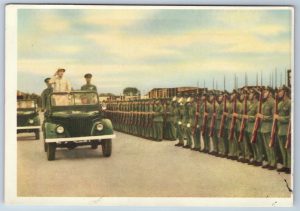
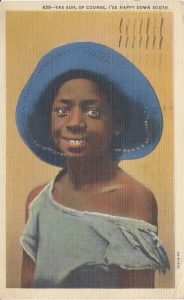
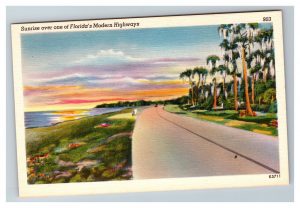
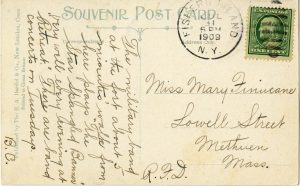



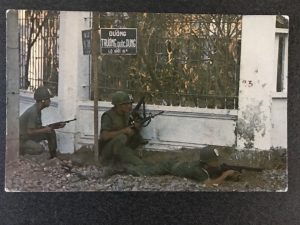
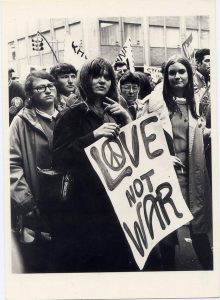
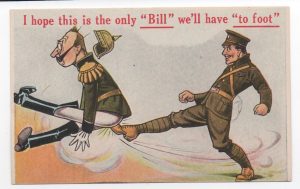
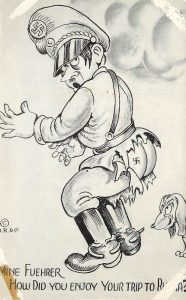
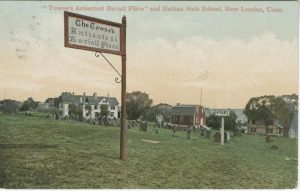









Recent Comments